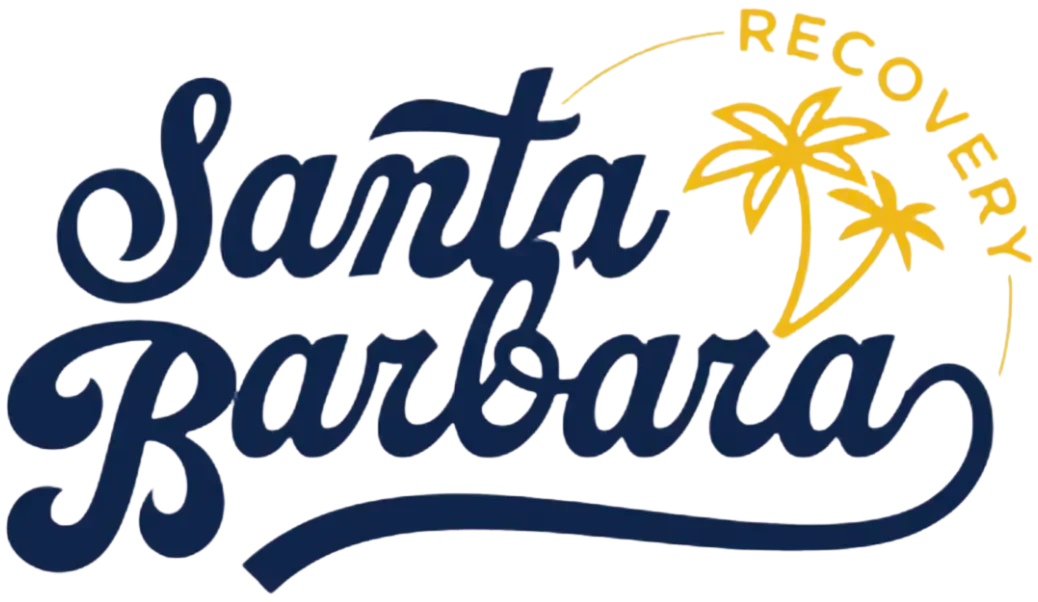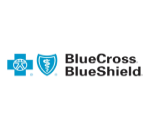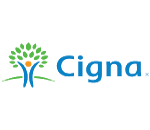Synthetic opioids, particularly fentanyl, have significantly influenced drug policy discussions in California in recent years. However, cocaine continues to be widely misused throughout the Golden State, which was identified as the fifth highest in the nation for cocaine consumption in a recent analysis.
According to a national survey by the Substance Abuse and Mental Health Services Administration, approximately 754,000 residents of California reported using the stimulant drug in the past year, accounting for 2.51% of the state’s population aged 18 and older.
Cocaine addiction has emerged as a major public health issue in the United States over the past several decades. The excessive consumption of stimulants can result in both physical and psychological dependence, leading to numerous adverse health, social, and economic consequences. Young adults are especially vulnerable to the onset of substance use disorders, including cocaine addiction, due to the ongoing development of their brains.
Although there is no straightforward solution to addiction, a multifaceted approach to treatment that targets both the physical and psychological dimensions of the disorder is essential. Luckily, Santa Barbara Recovery Center in California has designed treatment programs for men battling with cocaine addiction.

What is Cocaine?
Cocaine is a powerful stimulant drug that affects the central nervous system, and its use can have severe physical and mental health consequences. Long-term use of cocaine can lead to a range of health issues. Additionally, cocaine abuse can have significant social and legal consequences. It’s derived from the leaves of the coca plant, which is native to South America. Cocaine hydrochloride is the form of the drug most commonly used in medical and recreational settings. Illicit cocaine is often processed into a crystal form known as “crack” cocaine.
The primary psychoactive component of cocaine is its ability to block the reuptake of neurotransmitters, such as dopamine, norepinephrine, and serotonin, in the brain. This leads to an accumulation of these neurotransmitters in the synaptic cleft, resulting in heightened mood, increased energy, and a sense of euphoria.
Due to its high potential for abuse and the associated health risks, cocaine is classified as a Schedule II controlled substance in the United States, meaning it has a recognized medical use but a high potential for abuse that can lead to severe psychological or physical dependence. It is illegal to possess or distribute cocaine for non-medical purposes.
How Cocaine Affects the Brain and Body
Cocaine is a powerful stimulant drug that affects your brain and body in harmful ways. Once cocaine enters your bloodstream, it travels to your brain in a matter of seconds. The stimulant exerts its effects by interfering with the natural chemical messengers that regulate pleasure and movement. It also stimulates the primitive pleasure centers that significantly influence our thoughts, priorities, and behaviors.
This stimulation leads to a compulsion to use the substance, reinforced by the pleasure it provides. The drug alters brain function by elevating levels of a neurotransmitter known as dopamine in regions associated with motivation and reward. With frequent use, the brain adapts to the increased dopamine levels induced by cocaine.
Consequently, other healthy activities may begin to lose their appeal and enjoyment. Users often find themselves requiring larger doses of the drug merely to achieve a sense of “normalcy.” This pattern of repeated cocaine use disrupts the regulation of pleasure centers within the brain. Regular consumption paves the way for addiction, characterized by cravings and diminished functionality related to pleasure. The interplay of craving and euphoria perpetuates the cycle of addiction through mechanisms of positive and negative reinforcement.
- Dopamine Overload and Feelings of Euphoria: Cocaine causes a buildup of dopamine, a natural chemical messenger in your brain that makes you feel good. Normally, your brain recycles excess dopamine. But cocaine prevents this recycling, causing a buildup that produces an intense high and euphoria. This dopamine overload impacts your brain’s reward circuit and causes addiction. The rush of dopamine also impacts other parts of your brain involved in movement and cognition. This can lead to restlessness, hyperactivity, impaired judgment, and even paranoia or psychosis in high doses or after prolonged use. Research suggests that cocaine stimulates the brain’s sexual reward pathways. Within a short period, the initial pleasure derived from cocaine transitions into a powerful craving, which can lead to episodes of excessive use.
- Impact On The Heart: Cocaine also affects your body in dangerous ways. It causes a temporary increase in blood pressure, heart rate, and body temperature. This can lead to irregular heartbeats, heart attacks, and even sudden death, especially in users with undiagnosed heart conditions. The constriction of blood vessels can also lead to strokes, even in young adults without pre-existing conditions. Respiratory failure and seizures are other potentially deadly medical emergencies associated with cocaine use. In the long run, cocaine takes a heavy toll on both your physical and mental health. Prolonged use can lead to severe health issues like malnutrition, weight loss, and permanent damage to blood vessels in the heart and brain. It also worsens mental health issues like depression, anxiety, paranoia, and psychosis.
Signs and Symptoms of Cocaine Addiction
Cocaine addiction can manifest through various signs and symptoms, impacting both a person’s behavior and physical well-being. They’re characterized by a persistent inability to cease usage, despite the ongoing harm or distress it may cause. It’s important to note that the severity of these addiction signs may vary among individuals. If your consumption is becoming more compulsive, or if you recognize any of these indicators of cocaine addiction below, you may be facing a significant issue.
- Attempts to quit unsuccessfully
- Dependence on cocaine for daily functioning
- Chronic agitation
- Distrust towards others
- Avoidance of social interactions and neglect of responsibilities
- Financial issues
- Engaging in risky behaviors
- Legal problems
- Mood swings
- Paranoia and anxiety
- Persistent exhaustion
- Noticeable decline in overall health and physical appearance
- Frequent nosebleeds or a continual runny nose (common among individuals who snort cocaine)
- Visible track marks or signs of injection on the arms, legs, or neck
- Sleep disturbances and changes in sleep patterns, including insomnia and nightmares
- Increased tolerance
- Cravings
If any of these signs seem familiar, seeking professional help at a cocaine treatment center is critical. Taking this step can be instrumental in addressing and overcoming the challenges associated with drug abuse.
Short and Long-Term Effects of Cocaine Abuse
Cocaine is a highly addictive drug that can have devastating short- and long-term effects on your health and well-being. The severity of these effects can vary depending on factors such as the amount of cocaine used, the method of use, and individual differences. Even using cocaine just once can alter your brain and body in harmful ways.
- Short-term effects: Shortly after using cocaine, you may experience:
- Anxiety
- Paranoia
- Dry mouth
- Racing thoughts
- Euphoria and high-energy
- Increase heart rate and blood pressure
- Sleep disturbances such as insomnia and restlessness
- Dilated pupils
- Loss of appetite
- Hyperstimulation
- Paranoia and anxiety
- Increased risk of aggressive behavior
- Cardiac arrest
- Seizures
- Coma
- Long-term effects: With repeated use over time, cocaine addiction and abuse take a massive toll on both your physical and mental health. You may encounter the following:
- Respiratory failure
- Gastrointestinal issues
- Cognitive decline (Brain atrophy and impaired thinking)
- Depression and suicide
- Permanent psychosis
- Neurological Effects
- Psychiatric Disorders
- Sexual Dysfunction
- Seizures
- Depression
- Hypertension
- Severe weight loss and malnutrition
- Insomnia and exhaustion
- Anxiety and panic attacks
- Perpetual psychotic symptoms
- Development of tolerance and addiction
- Infection, redness, or sores at injection sites
- Loss of sensitivity in the brain’s reward pathways to natural reinforcers
- Nosebleeds and destruction of nasal passages from snorting
- Loss of ability to experience pleasure without cocaine
- Loss of sense of smell, problems swallowing
- Coughing and other lung problems
- Lung disease from smoking
- Irregular heartbeat
- Heart attack
- Stroke
- Overdose
- Death
We offer more than just treatment; we offer hope and healing. Our cocaine addiction treatment center in Santa Barbara, CA, provides a full continuum of care and a supportive community to help you recover and rebuild your life.

Why is Cocaine Addictive?
Cocaine is recognized for inducing a significant psychological dependence, second only to methamphetamine. Its ability to activate critical pleasure centers in the brain results in an intense sense of euphoria. Over time, repeated cocaine use can lead to the following developments:
1. Tolerance
2. Physical dependence
3. Withdrawal symptoms upon cessation
The addictive nature of cocaine is exemplified by the following characteristics:
1. Cocaine produces a rapid and intense high that is of brief duration.
2. This euphoric state is typically succeeded by a steep decline into feelings of depression or anxiety, prompting the user to consume more in an attempt to alleviate these negative emotions.
3. Regardless of the method of administration, cocaine enhances dopamine stimulation in the brain, fostering pleasurable sensations that promote continued use.
Cocaine exerts its effects by stimulating primitive pleasure centers that influence our thoughts, priorities, and behaviors. This leads to a compulsion to use the substance, reinforced by the pleasure it provides. The drug alters brain function by elevating levels of dopamine in regions associated with motivation and reward.
Consequently, repeated cocaine use disrupts the regulation of these pleasure centers. Regular consumption paves the way for addiction, characterized by cravings and impaired functions related to pleasure, driven by both positive and negative reinforcement. To effectively interrupt the cycle of addiction, which includes cravings and euphoric sensations during use, professional treatment centers for overcoming cocaine addiction are essential for individuals suffering.
What Are the Risks and Causes of Cocaine Abuse?
The causes and risk factors of cocaine abuse are multifaceted, involving a combination of biological, genetic, environmental, and psychological factors. It’s important to note that individuals may be influenced by a unique combination of these factors, and not everyone with risk factors will develop a cocaine addiction.
1. Genetics: There is evidence suggesting a genetic predisposition to substance abuse, including cocaine addiction. Individuals with a family history of addiction may be at a higher risk.
2. Access to cocaine: The easy availability of cocaine can increase the likelihood of experimentation and subsequent abuse.
3. Peer influence: Pressure from friends or social circles where drug use is normalized can contribute to the initiation of cocaine use.
4. Stressful environment: High-stress environments, such as dysfunctional families or workplace stress, may contribute to substance abuse as a coping mechanism.
5. Mental health disorders: Conditions such as depression, anxiety, or attention-deficit/hyperactivity disorder (ADHD) may increase the risk of cocaine abuse as individuals attempt to self-medicate.
6. Impulsivity: Individuals with impulsive tendencies may be more prone to experimenting with drugs, including cocaine.
7. Gender differences: Studies suggest that gender differences may play a role, with some research indicating that men may be more likely to engage in cocaine abuse compared to women.
8. Age: Adolescents and young adults may be more susceptible to experimenting with drugs, including cocaine, due to factors such as peer pressure and a developing sense of identity.
Cocaine Withdrawal Symptoms
While the symptoms associated with cocaine withdrawal can be quite distressing and uncomfortable, they are generally not considered life-threatening. Nonetheless, severe depression may result in perilous circumstances, whether or not suicidal ideation is present. Therefore, undergoing a professionally supervised detoxification process in a cocaine addiction rehabilitation facility is highly advantageous for effectively managing cocaine withdrawal symptoms.
Healthcare professionals are equipped to identify and address any underlying issues, such as mental health disorders, to mitigate the risk of further complications. This comprehensive approach aids individuals in coping with the uncomfortable and painful symptoms of cocaine withdrawal and is beneficial for relapse prevention and reducing the risk of cocaine overdose. Additionally, cocaine detox lays the groundwork for continued treatment and sustainable recovery. Accessing cocaine detox services in Santa Barbara can provide individuals with specialized support and resources tailored to their unique needs.
Cocaine Addiction Treatment
It is understood that cocaine addiction can affect anyone, regardless of their location, occupation, or educational environment. Predicting who will develop an addiction is not feasible. However, appropriate treatment at our cocaine rehab center in Santa Barbara, California, can assist our male clients struggling with addiction to improve their well-being and cease cocaine use. Nevertheless, achieving and maintaining recovery is a challenging process that requires significant effort and often spans several years, making a strong initial approach essential. Treatment for cocaine addiction includes the following:
- Medication: At present, there are no medications specifically approved for the treatment of cocaine addiction. Nevertheless, certain prescription medications that are utilized for other forms of substance abuse or related conditions have shown some efficacy in addressing cocaine dependence. Among these are a few medications that are primarily indicated for different disorders:
- Disulfiram: This medication, typically used for alcohol dependence, has been found to assist in preventing relapse.
- Propranolol: Commonly prescribed for angina and hypertension, this drug may help alleviate anxiety and support efforts to maintain abstinence.
- Baclofen: A muscle relaxant that has been noted to reduce cravings associated with cocaine use.
- Psychotherapy: The most effective approach to treating cocaine addiction involves a combination of behavioral and medical strategies, particularly through a rehabilitation program that incorporates intensive psychotherapy. Behavioral therapies have consistently demonstrated their efficacy in addressing cocaine dependency. Two prevalent, evidence-supported behavioral methods include:
Cognitive-behavioral therapy (CBT): This therapeutic approach has proven beneficial for individuals recovering from cocaine addiction. CBT assists individuals in recognizing the distorted thought patterns that contributed to their addiction. Additionally, it equips them with the skills to identify and avoid situations that may trigger a relapse.
Dialectical behavior therapy (DBT): A specialized form of CBT, dialectical behavior therapy focuses on teaching individuals to remain present, manage their emotions, enhance interpersonal relationships, and develop constructive coping mechanisms for stress. DBT encourages individuals to accept their current circumstances while simultaneously striving for positive change.
- Treatment Programs: At our cocaine addiction rehabilitation center, we provide a range of care options tailored for men grappling with addiction. Treatment for cocaine addiction includes:
- Residential treatment: This program requires individuals to reside full-time at the treatment facility. Given the highly addictive nature of cocaine, inpatient care is essential as it removes the distractions and triggers present in daily life. Residing in a drug-free environment enables individuals to concentrate on their recovery and develop strategies to prevent relapse.
- Outpatient treatment: Our outpatient programs vary in frequency, offering a partial hospitalization program (PHP) and an intensive outpatient program (IOP). The appropriate program is typically determined by the severity and type of addiction experienced by the individual.
- Dual diagnosis treatment: A dual diagnosis occurs when a person faces both an addiction and a mental health disorder. It is not uncommon for individuals with mental health challenges to also struggle with substance use disorders. Effective dual diagnosis treatment for both conditions must occur concurrently within the same facility and by the same treatment team.
There is no universal method for addressing the challenges posed by addiction. When selecting a substance abuse treatment program, it is advantageous to contemplate the subsequent phase of rehabilitation. This consideration is essential, as overcoming addiction necessitates effective treatment, and some programs integrate both elements.
A systematic approach is vital during the initial phases of addiction recovery. Our skilled medical team will focus on your safety while striving to ensure your comfort to the fullest extent possible. Given the inherent risks associated with withdrawal, we strongly recommend against attempting self-detoxification.
If you or someone you care about needs assistance for drug abuse, our facility in Santa Barbara, CA, offers access to exceptional levels of care. Our team is dedicated to identifying the underlying issues by providing both emotional and physical support, as well as addressing any potential complications that may contribute to the situation. We provide a variety of treatment programs for cocaine dependence.
Finding the Right Cocaine Addiction Treatment Center in California
Finding the right cocaine addiction rehab center in California can be challenging, but it’s one of the most important steps to overcoming your addiction and living a healthy, happy life. With hundreds of rehab facilities in the state, how do you choose?
- First, determine what level of care you need. Do you require medical detox, residential treatment, outpatient care, or a combination? Detox ensures a safe withdrawal, residential care offers round-the-clock support, and outpatient care enables treatment while living at home.
- Next, consider the rehab’s treatment approach. Look for a program that offers evidence-based treatments such as cognitive behavioral therapy, motivational interviewing, family counseling, trauma therapy, and 12-step support groups. A customized, holistic approach is most effective.
- Then, evaluate the facility and staff. Look for licensed, accredited rehabs with highly trained doctors, therapists, and counselors. Check out reviews from former clients and their success rates. Meet with staff and ask questions about their experience helping cocaine addicts. Also, consider the rehab’s amenities and environment. Do they offer exercise, art or music therapy, meditation, and a comfortable setting? A relaxing space will aid your recovery.
- Finally, review costs and insurance coverage. Rehab can vary from $5,000 to $30,000 per month. See if your health insurance covers residential or outpatient cocaine rehab. You want a program you can afford so you can focus on your sobriety, not your finances.
With the right approach, knowledgeable staff, essential services, and a nurturing environment tailored to your needs, you can find success in cocaine rehab in California. If a relapse occurs, don’t be disheartened, simply return to the program that empowers you for lasting sobriety. You deserve to live free from addiction.

Break the Cycle Of Addiction at Our Cocaine Addiction Treatment Center
If you or a loved one is facing challenges related to cocaine addiction, it is imperative to take action now. We understand that you may have questions, and we invite you to reach out to us to learn more about the services offered by our cocaine addiction treatment program in California. A more rewarding life is attainable if you are ready to pursue it.
Breaking free from cocaine addiction requires courage and commitment. So, take action today by reaching out to us. Our compassionate team at our cocaine rehab center is ready to guide you toward a brighter, drug-free future!













